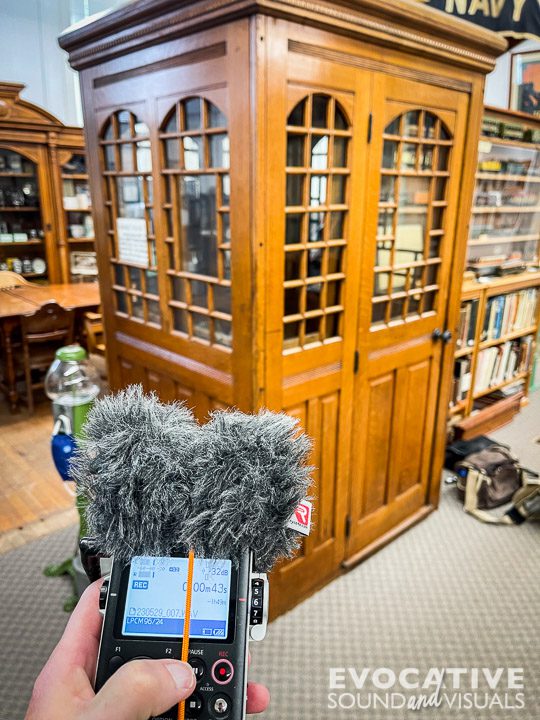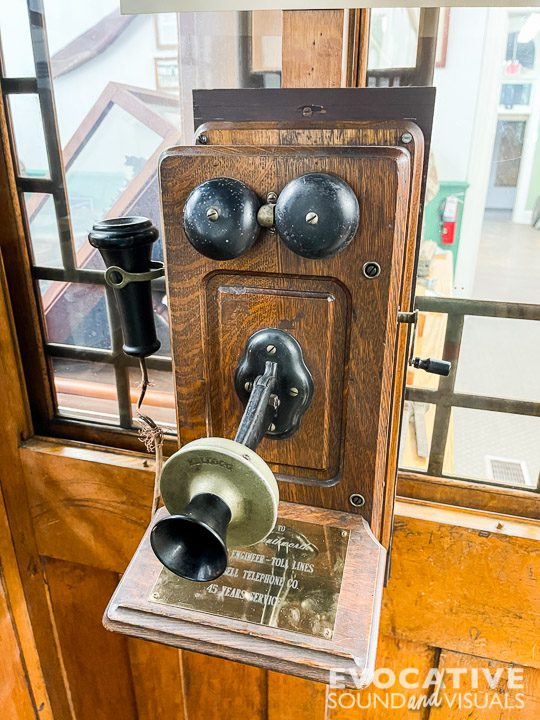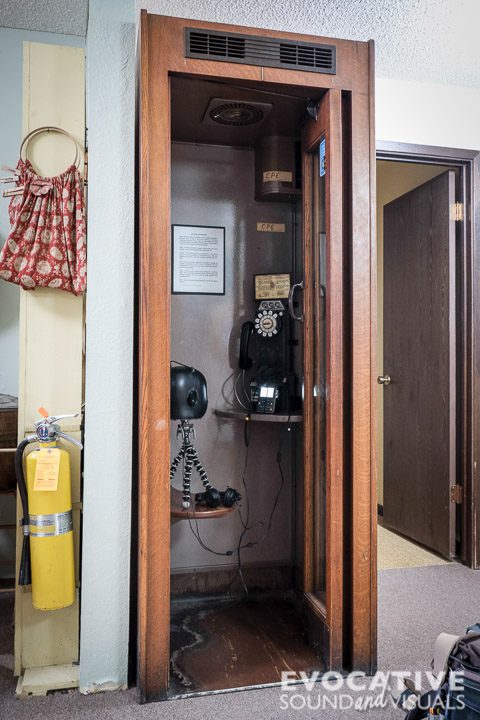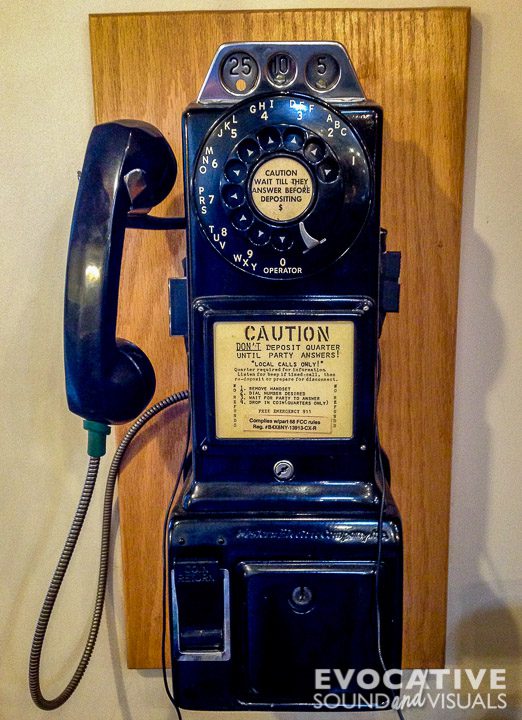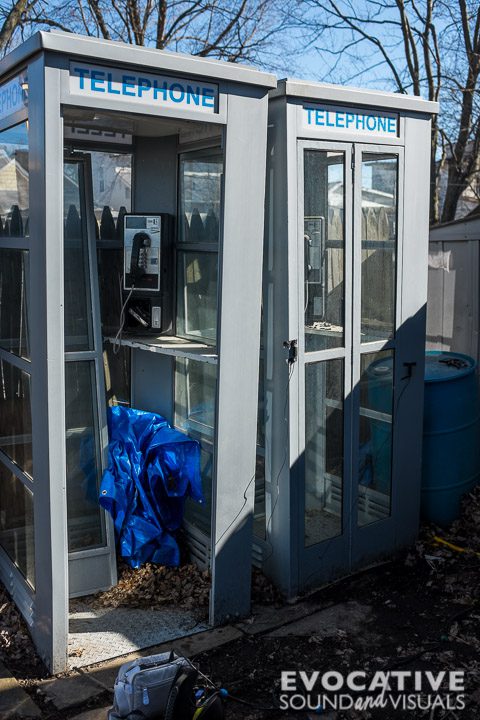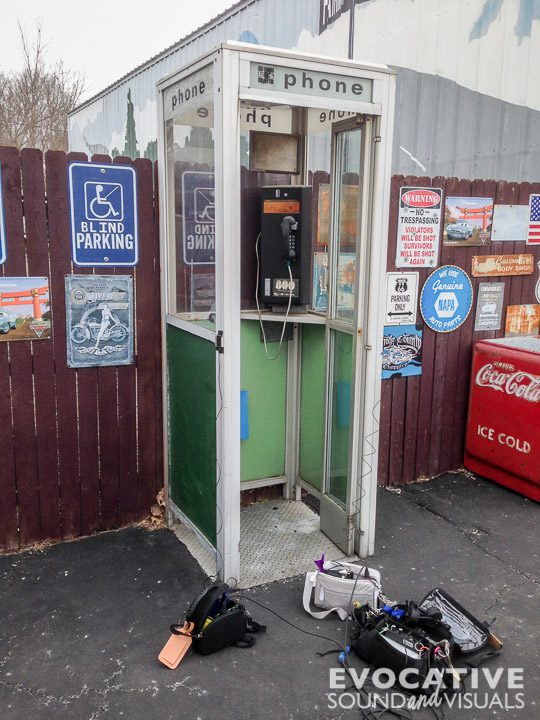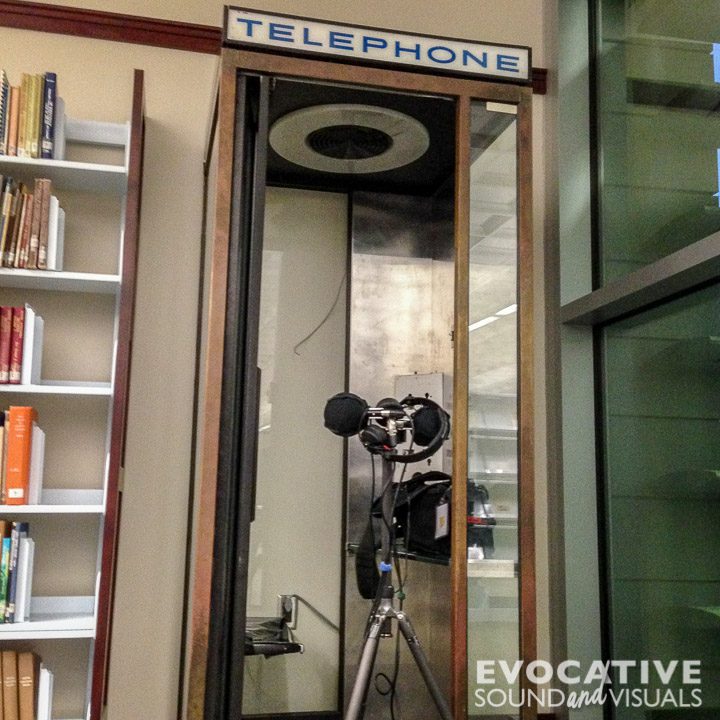I am excited to announce the launch of my latest sound effects library, Telephone Booths. It features the sounds of indoor wooden and outdoor aluminum telephone booths. From the early 20th century until the last decade, these booths were found inside hotels, restaurants, offices, state capitol buildings, highways and rest areas throughout the United States. In addition, the library includes sounds of pay telephones that would have been used inside these booths. These include a wooden Kellogg model 2884 hand crank phone from the early 1900s, a Western Electric model 233 3-slot rotary telephone from the 1950s and a modern 1-slot push-button Touch-Tone telephone.
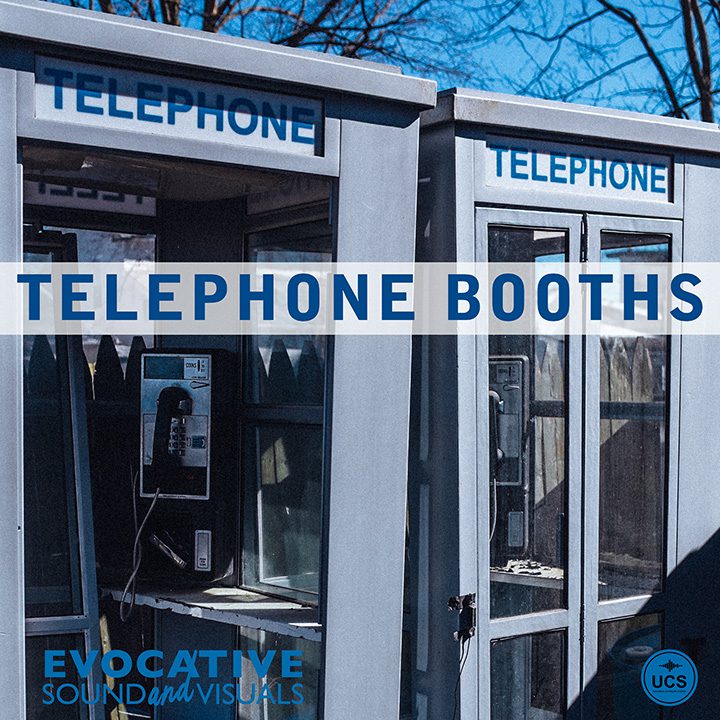
I used a variety of microphones along with several miking techniques (X/Y, OFTF, and binaural). You’ll hear bi-fold doors sliding open and closed in stereo, sometimes accompanied by an annoying squeal. You’ll listen to coins being dropped into the phone and receivers being picked up and placed back on their cradles. And of course, you’ll hear numbers being dialed. On a rotary phone, each number takes slightly longer to circle the dial, with one being the shortest and zero being the longest. To be accurate, you’ll want to create specific key tones for each number on a push-button phone. See below for details on how to do this easily.
Enjoy Telephone Booths. Gather all your friends and stuff yourselves inside!
Listen to a Preview
Library Specifics
- 54 sounds, all recorded at 96 kHz/24-bit
- 103 MB
- UCS compliant
- Captured with Sound Devices 702, Sony PCM D100 and Sony M10/Sound Devices Mixpre D recorders used with Line Audio CM3 (in ORTF), Barcus Berry and Luhd PM-01AB microphones
Why I Created This Library
My favorite movie is Citizen Kane (1941). I’ve seen it a lot. Each time watching for something new. Sometimes it’s for the story. Other times it’s for the lighting. But most times I watch it for the composition; specifically, the framing. One scene in particular offers up one of the best framing moments in film history. I’ll try to describe it from memory.
Susan Alexander, Kane’s former mistress and second wife, has hit rock bottom after a disastrous one-night-only singing career at an opera house Kane built for her in Chicago. We see her sitting at a table inside a dimly lit nightclub in Atlantic City, where she sings the twice-nightly floor show to get by. Her head is down next to an empty booze glass.
A movie real reporter attempts to interview Alexander to discover what Kane’s dying word, “Rosebud” means. Alexander wants no part of the interview, screaming at the reporter to get out. He retreats to a telephone booth to inform his editors. How Wells positions his actors in this short scene should be a masterclass in blocking. Watch a YouTube video of it here. Pay attention to how the waiter moves when the reporter closes the bi-fold door. And yes, I know what Rosebud was.
This scene got me thinking. I needed to record some telephone booths before they all disappeared into museums and man caves.
Where I Found My Telephone Booths
I found telephone booths and good people willing to allow me to record them at two museums, one public library and in the backyard of a guy that used to work on them for a living. To comply with the Americans with Disabilities Act (ADA), full-size telephone booths with bi-fold doors gave way to walk-up telephone enclosures. This gentleman had a nice collection of booths he was looking to sell.
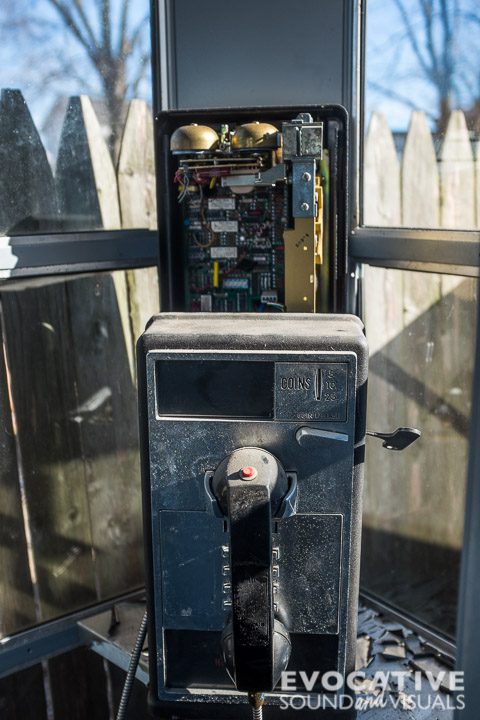
The Last In-Service Telephone Booth in the United States
According to my research, the last operational telephone booth is in Prairie Grove, Arkansas, across from a Civil War battlefield that shares the town’s name. If you ever find yourself driving along U.S. 62, be sure to check it out. It is an aluminum and glass structure installed in the early 1960s. Moreover, this telephone booth is the first, and I suspect the last, to be listed on the National Register of Historic Places. You can view its exact location on the Google map below. Make sure to use the street view feature and drag the little yellow man so you can see the plaque.
Creating Downloadable Key Tones Online
I recorded a dial tone and a busy signal for this library, even creating a loop for the busy signal. But there’s an even better way to get these key tone sounds – known as Dual-tone multi-frequency signaling (DTMF) – for your projects. The tone for each number is the combination of two frequencies. For example, overlap 697Hz and 1209Hz, and you’ll create the tone for the number one. A keypad chart can be found at this Wikipedia page.
That’s a lot of work to create a 10-digit number. An easier way is to use this DTMF Tone Generator at onlinesound.net. Type in any number, choose how fast you want it to play, then download the wav file. To generate random numbers, use Random.org/strings. Cut and paste this set of random numbers into the online tone generator above, and create the kind of tones you hear in spy thrillers.
For example, listen to the number 1-202-456-1414 below. Dial this, and you’ll be connected with the switchboard at the White House.
Behind the Scene
Further Reading
Click here to see a 2001 company brochure from Benner-Nawman, Inc. The Arizona-based company manufactured over 600,000 aluminum and glass telephone booths, along with walk-up models, from 1948 until 2005. They are still in business, just not the telephone booth-building business. Too sad.
Of course, there are other great movies featuring telephone booths besides Citizen Kane. In no particular order, here are some I’ve watched recently:
- Glengarry Glenn Ross (1992), features Jack Lemmon and Ed Harris inside a bank of indoor wooden booths.
- 3 Days of the Condor (1975), with Robert Redford inside an aluminum and glass model.
- Phone Booth (2002), featuring Colin Farrell held hostage inside an aluminum and glass model in New York City.
- North by Northwest (1959) and The Birds (1963), featuring Cary Grant and Tippi Hedren, respectively. Obviously, Alfred Hitchcock had a thing for telephone booths.


